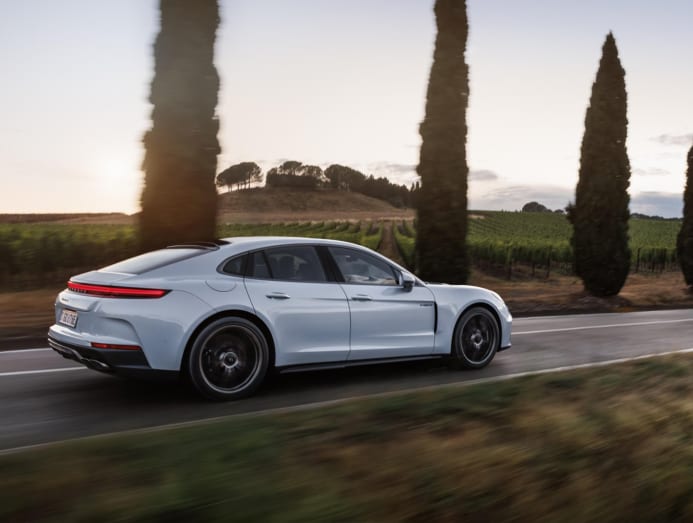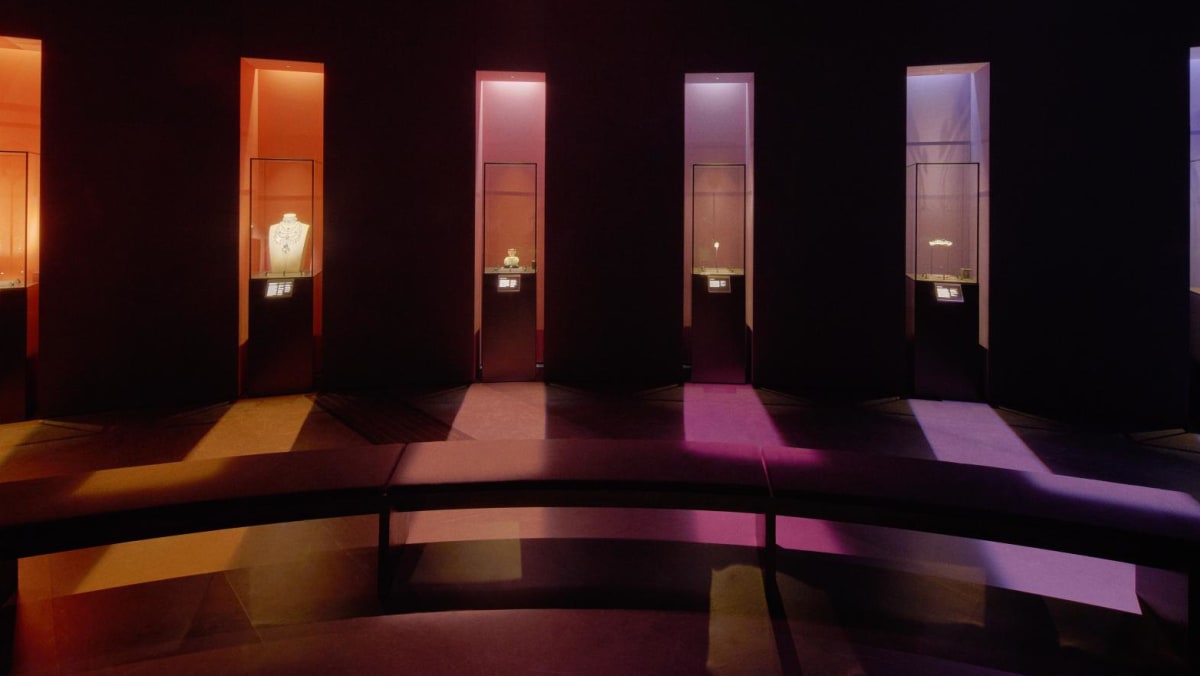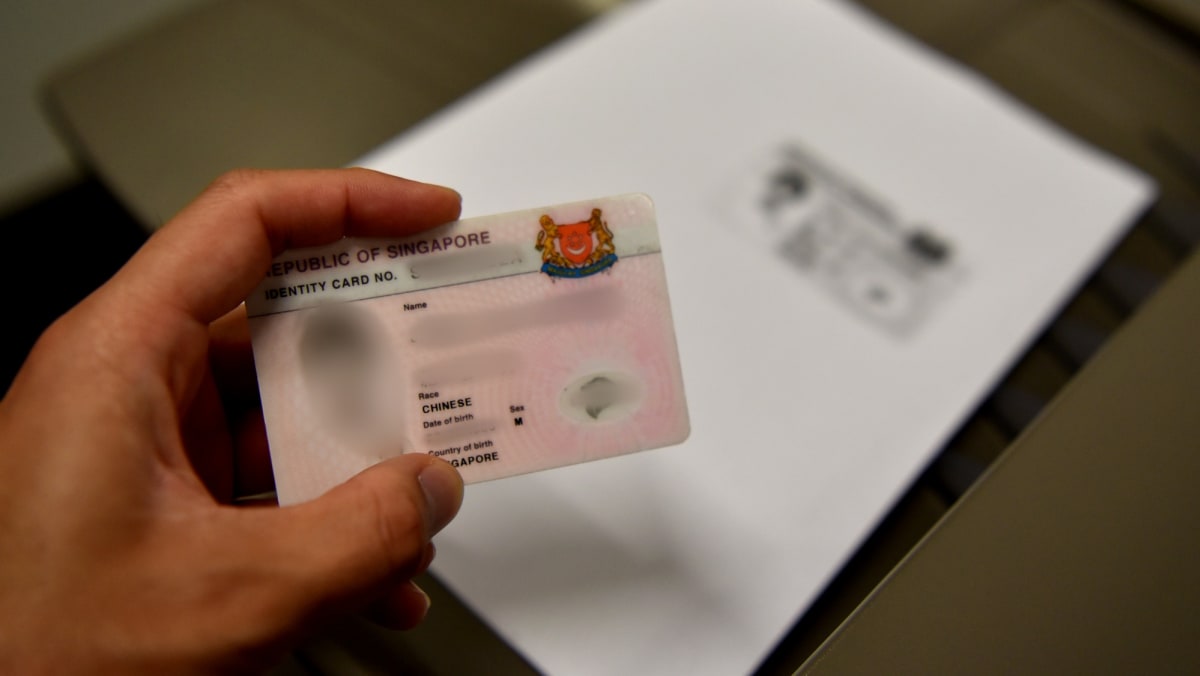When Porsche first introduced the Panamera in 2009, it wasn't love on first sight. Porsche’s first four-door sedan still looked like a Porsche, but something about its ungainly proportions reminded you of your boomer uncle’s station wagon – a peculiar Porsche in contrast to the beloved 911 and an enduring icon since 1964.
Even later generations with all their nips and tucks couldn’t save the Panamera from being relegated to being the painfully underloved gawky cousin of all other Porsches, if we’re being honest. Until now.
Enter the 2025 Panamera, which Porsche handed us the keys to in Stuttgart. It no longer oozes awkward ugly duckling vibes, and dare we say it – Porsche has finally got it right.
In short, it’s the most Porsche-looking Panamera to date and Porsche has finally redeemed itself. All it took was 15 years.
WHAT’S DIFFERENT?
 The Panamera GTS sits 10mm lower while both its suspension and sports exhaust system have been given a particularly sporty tuning. (Photo: Porsche)
The Panamera GTS sits 10mm lower while both its suspension and sports exhaust system have been given a particularly sporty tuning. (Photo: Porsche)
Less evolution and more revolution, Porsche has upped the style stakes starting with a revised front end where muscular arches meet a new headlamp design featuring those iconic four-point LED daytime running lights.
But it’s the rear that single-handedly wins the Panamera more favour with Porsche purists. Specifically, the way the fastback now tapers off, giving the new edition a sleeker silhouette more aligned with Porsche’s legendary sports cars we know and love.
 The interior of the Panamera GTS. (Photo: Porsche)
The interior of the Panamera GTS. (Photo: Porsche)
Besides better exterior styling, the new Panamera is also more intuitive and connected than ever on the inside, offering a wider range of digital features like the optional 10.9-inch screen embedded in the passenger side of the dash that can even stream video content while the car is being driven. And it’s designed such that the screen cannot be seen from the driver’s seat. Smart or what?
Now what’s also different are the revamped editions of the range-topping flagship Panamera Turbo S E-Hybrid and the Panamera GTS that we drove in Germany, which join the base Panamera, the Panamera 4 E-Hybrid, the Panamera 4S Hybrid, and the Panamera Turbo E-Hybrid launched earlier in 2024.
One thing about Porsche is they always spoil you with choice, with the six-model line-up offering different powertrain options with varying degrees of power output and a very different drive experience for each, starting from about half a million all the way up to about S$1.2 million (US$890,000) for the top-of-the-range Panamera Turbo S E-Hybrid – without COE.
WHY SO EXPENSIVE?
 The Panamera Turbo S E-Hybrid. (Photo: Porsche)
The Panamera Turbo S E-Hybrid. (Photo: Porsche)
Because it’s Singapore, and because it’s Porsche. Jokes aside, the two new variants are equipped with a 4.0 twin-turbo V8 engine that already powers the Turbo E-Hybrid, featuring comprehensive upgrades to further tune the engine for greater power and performance over its predecessor.
And of the two new additions, it’s only the Turbo S E-Hybrid that’s a race-track worthy beast of a luxury sedan. In fact, it’s a Nurburgring track record holder as the fastest saloon with a combustion and hybrid engine in its class, having lapped the illustrious circuit in 7:24.172 minutes – beating the existing record by 3.62 seconds in July 2024.
Fun fact: The Panamera had already set Nurburgring class records in 2016 and 2020, and this latest record marks a 5.64-second improvement on the last record – a testament to the continued development and advancement of the four-door Porsche we loved to hate.
What makes the Turbo S E-Hybrid the fastest and most powerful production Panamera produced? Well, it’s that V8 engine we talked about earlier plus the fact that its electric motor helps boost power output to the tune of 575kW (782PS), signalling a 75kW increase over its predecessor. Total torque, meanwhile, has jumped 150Nm to a whopping 1,000Nm.
And so it was with great delight and unbridled glee that we zipped around the country roads of Metzingen, located about 30 km south of Stuttgart, with the Turbo S E-Hybrid hitting the century sprint in the 2.9 seconds the Panamera’s press release promised.
 The Turbo S E-Hybrid is the fastest and most powerful production Panamera produced. (Photo: Porsche)
The Turbo S E-Hybrid is the fastest and most powerful production Panamera produced. (Photo: Porsche)
Then, there’s the Porsche Active Ride chassis control system, which comes as standard in the Turbo S E-Hybrid. It gives the car greater grip and traction in dynamic driving situations while soaking up shocks and bumps for a more balanced and smoother ride.
Porsche says that when the appropriate mode is activated, the car leans inwards into corners like a motorcycle, pulling the front down when accelerating and the rear when decelerating, therefore compensating on the pitching and rolling motions thus reducing their impact on the car’s occupants. Which basically means you’ll feel less like you’re about to hurl if we’re the ones behind the wheel of such a high-performance vehicle.
This advanced suspension system also allows for the vehicle to be raised by 55mm for easier entry and exit which, presumably, should also come in handy for when your passengers are about to lose their lunch.
Keeping the car humming along in electric mode is also easier than before with its high-voltage, 25.9 kWh-capacity battery that’s capable of storing 45 per cent more energy than the previous one did. Recuperation output has also increased to 88 kW for a more energy-efficient drive than ever before in fully electric mode which, by the way, you can drive in for up to 88 km.
Looks-wise, the Turbo S E-Hybrid also gets a massive thumbs-up if for nothing else but its ultra cool metallic-grey Turbonite trim you get only with Porsche’s Turbo models, seen here for the first time on this variant; on the airblades, rear bumper and forged 21-inch centre-lock wheels on the exterior, as well as on the steering wheel, centre console controls and trim strips and belt straps inside the car.
WHICH WOULD YOU PICK?
Now for true petrolheads, the Panamera GTS is the one to beat – and for about S$300,000 less, to boot.
It may offer a little less power (368kW (500PS); 600Nm), but it’s the most agile variant of the lot, attacking the winding roads on the fringes of Metzingen not unlike a cheetah in the wild.
The Panamera GTS, or Gran Turismo Sport in Porsche speak, sits 10mm lower while both its suspension and sports exhaust system have been given a particularly sporty tuning; the latter adding more bite to that growl for an even more exhilarating ride as the GTS leaps from zero to hero in an utterly respectable 3.8 seconds.
Ultimately, both variants flaunt very different drive characters and both evoke different emotions behind the wheel. But one edges out the other with just a little more sex appeal – can you guess which?















.png?itok=erLSagvf)






























